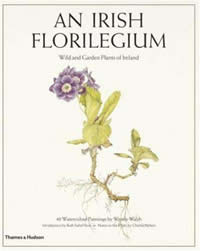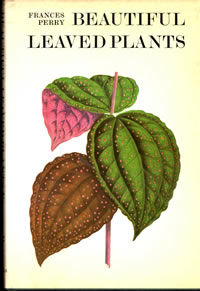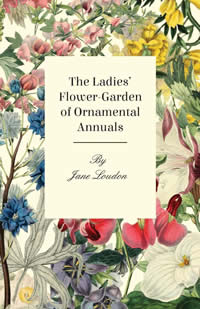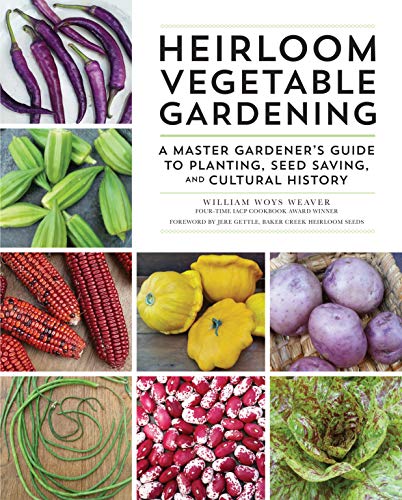 Marietta and Ernie O’Byrne are very clear about their gardening goals. They are not interested in low-maintenance gardening “with orderly shrubs, surrounded by chipped mulch, and plants that don’t touch,” but neither do they care for plant thugs that dominate their neighbors. To achieve these ends, much maintenance is required and they relish this work. “A Tapestry Garden: The Art of Weaving Plants and Place” captures these ideals as they have been expressed in their two acres of gardens on a farm in Eugene.
Marietta and Ernie O’Byrne are very clear about their gardening goals. They are not interested in low-maintenance gardening “with orderly shrubs, surrounded by chipped mulch, and plants that don’t touch,” but neither do they care for plant thugs that dominate their neighbors. To achieve these ends, much maintenance is required and they relish this work. “A Tapestry Garden: The Art of Weaving Plants and Place” captures these ideals as they have been expressed in their two acres of gardens on a farm in Eugene.
The O’Byrnes are famous for their hellebores, so I wasn’t surprised to read about their woodland gardens with profiles of shade loving favorites, including trilliums, arisaemas, and podophyllum. But I didn’t know they had large swaths of sun, too. These includes a riotous summer perennial border (a “full-flowered buxomness of leaning, mingling, sprawling growth”) and a chaparral garden, that recreates the look of the southwest, albeit with plants that can survive a Pacific Northwest wet winter and spring.
In reading this latter chapter, I was reminded of the books by Beth Chatto, especially “The Gravel Garden” (2000), one of my favorite all-time gardening books. The O’Byrnes are not afraid to experiment. The writing (primarily in Marietta’s voice) recounts all the successes and failures in a matter-of-fact way and quietly expounds their right place, right plant philosophy throughout their several garden settings and microclimates.
Both Marietta and Ernie grew up loving nature. Both had college degrees in biology and worked together in their own landscape management company for much of their careers, but when it came to their own garden, they made plenty of horticultural mistakes, especially in the early years. While this at first seems like a book for the gardening elite, I encourage beginners to give it a read. You will be amused by the authors’ misfortunes and encouraged to shrug off your own failures and try again.
As they spent more and more time in their own garden, the authors eventually curtailed some of the maintenance business to start their own nursery. This latter continues today as a wholesale business exclusively selling hellebores. A chapter highlights the beauties they have developed, especially the Winter Jewels series, with stunning photographs. This book also includes a very helpful chapter on their maintenance practices, and maps of the garden inside both covers, in case you get lost during the written tour.
The O’Byrnes even sleep in their garden, enjoying the night fragrances of their summer, sunny perennials and the hummingbirds and other pollinators that are on wing at first light. Their plant palette is very broad, including many natives but also challenging-to-grow plants from around the world. Many of these are grown from seed – often there is no other way to obtain these plants. They have decided, “harmonious chaos is possible in a garden, with denizens from multitudes of countries of origin. Would that we humans could be as comradely as is the diverse plant world here represented.”
Excerpted from the Fall 2018 Arboretum Bulletin.
 Ellis Rowan (1848-1922) was an Australian painter, specializing in wildflowers in all parts of that country at a time when the native flora was not well-known by European settlers. She was not trained as a botanist, which made her work of limited use in that field. However, the exuberance and abundance (at least 3,000 survive) of her paintings made her very popular. She typically combined flowers with leaves and stems into bouquets, and worked quickly, being able to paint in watercolors and gouache without initial pencil underlay.
Ellis Rowan (1848-1922) was an Australian painter, specializing in wildflowers in all parts of that country at a time when the native flora was not well-known by European settlers. She was not trained as a botanist, which made her work of limited use in that field. However, the exuberance and abundance (at least 3,000 survive) of her paintings made her very popular. She typically combined flowers with leaves and stems into bouquets, and worked quickly, being able to paint in watercolors and gouache without initial pencil underlay. Women botanical artists have made many contributions to horticulture and botany. One of these was Wendy Walsh (1915-2014). English by birth, she also lived in Japan and the United States before settling in Ireland in 1958 at the age of 43. She lived and worked there the rest of her long life, providing illustrations for 33 books, many on Irish gardening and native plants.
Women botanical artists have made many contributions to horticulture and botany. One of these was Wendy Walsh (1915-2014). English by birth, she also lived in Japan and the United States before settling in Ireland in 1958 at the age of 43. She lived and worked there the rest of her long life, providing illustrations for 33 books, many on Irish gardening and native plants. Brent Elliott, retired librarian and historian of the Royal Horticultural Society, declared that Frances Perry’s writing showed “evidence of reading both broader and deeper than that of most garden writers of the time.”
Brent Elliott, retired librarian and historian of the Royal Horticultural Society, declared that Frances Perry’s writing showed “evidence of reading both broader and deeper than that of most garden writers of the time.” Frances Perry (1907-1993) perceived a lack of gardening information for women in the mid-20th century. As a horticultural lecturer, horticultural advisor (to her county council), and gardening correspondent in England, she noted an ongoing demographic change: more and more women were attending her presentations or writing her letters. Her colleagues, both men and women, had also observed this change.
Frances Perry (1907-1993) perceived a lack of gardening information for women in the mid-20th century. As a horticultural lecturer, horticultural advisor (to her county council), and gardening correspondent in England, she noted an ongoing demographic change: more and more women were attending her presentations or writing her letters. Her colleagues, both men and women, had also observed this change. Jane Webb Loudon’s most significant work was “The Ladies’ Flower-Garden,” a multi-volume set with each volume focused on a particular type of plants. The Miller Library has the first volume in this series devoted to annuals. While this book is in the Library’s Rare Book Room and only available to view by appointment, many of the illustrations appear in “
Jane Webb Loudon’s most significant work was “The Ladies’ Flower-Garden,” a multi-volume set with each volume focused on a particular type of plants. The Miller Library has the first volume in this series devoted to annuals. While this book is in the Library’s Rare Book Room and only available to view by appointment, many of the illustrations appear in “ The book “Heirloom Vegetable Gardening” was a classic almost from the moment it was first published in 1997. The author, William Woys Weaver, is a rare scholar of the kitchen garden with a PhD in food ethnography, or the study of cultural eating habits.
The book “Heirloom Vegetable Gardening” was a classic almost from the moment it was first published in 1997. The author, William Woys Weaver, is a rare scholar of the kitchen garden with a PhD in food ethnography, or the study of cultural eating habits.![[A People's Curriculum for the Earth] cover](https://depts.washington.edu/hortlib/graphix/people'scurriculumfortheearth.jpg)
 Marietta and Ernie O’Byrne are very clear about their gardening goals. They are not interested in low-maintenance gardening “with orderly shrubs, surrounded by chipped mulch, and plants that don’t touch,” but neither do they care for plant thugs that dominate their neighbors. To achieve these ends, much maintenance is required and they relish this work. “A Tapestry Garden: The Art of Weaving Plants and Place” captures these ideals as they have been expressed in their two acres of gardens on a farm in Eugene.
Marietta and Ernie O’Byrne are very clear about their gardening goals. They are not interested in low-maintenance gardening “with orderly shrubs, surrounded by chipped mulch, and plants that don’t touch,” but neither do they care for plant thugs that dominate their neighbors. To achieve these ends, much maintenance is required and they relish this work. “A Tapestry Garden: The Art of Weaving Plants and Place” captures these ideals as they have been expressed in their two acres of gardens on a farm in Eugene. Holden Village is a Lutheran community center deep in the Cascade Mountains, accessible only by a boat ride on Lake Chelan followed by a bus ride on a mountain road. At 3,000 feet, it is very cold and snowy in the winter, and cut off from Wi-Fi and cell phone reception.
Holden Village is a Lutheran community center deep in the Cascade Mountains, accessible only by a boat ride on Lake Chelan followed by a bus ride on a mountain road. At 3,000 feet, it is very cold and snowy in the winter, and cut off from Wi-Fi and cell phone reception.